- Home
- Kim Newman
An English Ghost Story Page 9
An English Ghost Story Read online
Page 9
Every song Kirsty had ever loved ran through her head, from ‘Right Said Fred’ through ‘Hey Jude’ and ‘Anarchy in the UK’ to ‘Common People’ to ‘Becoming More Like Alfie’. Her husband got up, and pulled back her chair as she stood.
‘I think we should join the children, darling,’ he said, offering his arm.
‘I love,’ she said, beginning the sentence she had clung to for so long it had lost all meaning, then tripping as her tongue ran up against a barrier in her mind.
‘No,’ she said, concentrating to make the barrier go away. ‘I do, Steven. It’s back again. It was here, at the Hollow, waiting.’
He brushed her face with whisper kisses.
‘I love you,’ she said, and her heart was free.
He scooped her up like a bride in a cartoon, and carried her through the shimmer into the orchard.
* * *
Jordan woke up in the orchard with the dawn, face glazed with dew, her brother curled up against her tummy. She blinked in the light, expecting the hammer of a hangover headache to strike, but there was nothing. She could think and breathe and see clearly.
Tim mumbled and rolled up into a ball.
She stood. Sparkling cobwebs hung between the rushes. She had wound up making her bed by the stream, in a natural depression. Dawn-warmth smoothed away her momentary goose-flesh.
Mum and Dad were here too, somewhere. She wasn’t worried about them.
It was like the first healthy day after a bad cold.
The morning after the best-ever love.
Everything was fresh. Her mouth tasted different, cleaner, sweeter. She ran her hands through her hair and found it finer, untangled, heavier.
She was comfortable in herself. She didn’t feel fat or scrawny.
If only Rick were here.
The longing was a worm in the apple. Soon, he would share this with her, with the family.
Last night, she had danced.
Now, she wanted breakfast. When was the last time she had eaten anything before midday?
The smell of fresh bread emanated from the kitchen, and the soft whistle of an old-fashioned kettle.
Tim snapped awake.
‘Come on, soldier,’ she said. ‘Reveille.’
Mum leaned out of the kitchen window, beaming and beckoning.
‘How many eggs?’ she shouted.
‘Infinite eggs,’ Jordan shouted back.
‘I’ll try my best.’
Jordan and her brother entered the house by the kitchen door.
* * *
With the morning post was a package, addressed to ‘The Naremore Family’. Recognising the tiny hand script, Kirsty claimed and opened it. Why was Vron’s first communiqué since the Weezie book addressed to the family rather than her? Did that mean anything? Should it worry her? She didn’t think anything could worry her any more.
Jordan ate like a soldier and amused Tim with her chatter. Steven watched the kids, not realising his wife was watching him. She saw his laughter lines crinkle, recognised those same lines in Jordan, even in Tim (who took after her). The magic was all around. She was safe.
Inside Vron’s packet was another book. A battered paperback with a fiery spectre on the cover. Ghost Stories of the West Country, by Catriona Kaye. Volume 46 in The Dennis Wheatley Library of the Occult. A peek inside showed a charity-shop stamp and a column of crossed-out prices which began with an optimistic £2.50 and sank to a despairing 45p – which was exactly the original recommended retail price listed on the back cover. This 1976 edition, with an introduction by Wheatley, was a reprint of a book first published in 1962.
Though she’d never heard of Catriona Kaye, Kirsty remembered Dennis Wheatley. His black-magic books were still liable to be confiscated by tutting teachers when she was at school. She’d tried to read one, but found it stodgy and annoying – she’d skipped to the quivering black mass the other girls had gone on about, then given up on it. She skimmed Wheatley’s introduction. A full third of the wordage described the menu served at the society dinner where he’d met the authoress for the only time (the consommé was excellent, apparently). Then, he dismissed Miss Kaye as ‘an impertinent, though not unintelligent flapper’ and copied out the original back jacket copy (‘a fascinating pot-pourri of spine-chilling tales’) to pad his piece to two pages. Ghost Stories of the West Country wasn’t an anthology of made-up stories – at least, not in the sense that any writer invented them – but a collection of accounts of ‘true hauntings’ in Somerset, Devon, Dorset and Cornwall.
A woven bookmark – one of Vron’s unique creations, her own black hair with a carefully maintained white streak – stuck out, about halfway through. Kirsty opened to that point and read a few sentences.
‘What have you got?’ Steven asked.
‘Essential information,’ she said, holding the book up to show the title. ‘Apparently, we live in “the most haunted spot in England”.’
‘Tell us something we don’t know, Mum,’ said Jordan.
‘Let me read this, and maybe I will.’
* * *
That morning, the family all read the chapter. First Kirsty, then Jordan, then Steven, then – with serious concentration, and many questions – Tim. When they had all taken aboard what the book had to say about their home, they reconvened their meeting of the night before, under the midday sun with the heat lying heavy all around.
‘So,’ said Kirsty, ‘what do we think?’
From
Ghost Stories of the West Country
by
CATRIONA KAYE
Chapter Three
‘THE MOST HAUNTED SPOT IN ENGLAND’
Plenty of nominations stand for the title of ‘most haunted house in England’. ‘Ghost-hunter’ Harry Price staked a claim for Borley Rectory in Essex, while Lord Halifax advocated Haverholme Priory in Lincolnshire. In my experience, the most haunted spot in England is an apple orchard in Somerset.
Currently the home of Louise Magellan Teazle, most-loved of our children’s authors, Hollow Farm has been the site of supernatural manifestations for at least a thousand years. A mile or so outside the hamlet of Sutton Mallet, the property has been cultivated ground since well before the Domesday Book. Once an island in the marshes, it became part of the Somerset Levels after the construction of the King’s Sedgemoor Drain in 1798.
I first visited the orchard in 1923, when Miss Teazle was little older than her famous heroine Weezie. She already showed the pluck that makes her books enduringly popular with children and adults alike. A surge in poltergeist activity disturbed the young Louise’s elderly parents but affected the cheerful, open girl not a whit. She confided in me that she considered night-time rearrangements of the furniture little more than conjuring shows staged for her entertainment. I have returned in recent years to find the ghosts tamed if not dispelled, a circumstance I ascribe to the geniality of their present landlady, who has – as generations of children understand – an ability to get along with anyone, and confesses to be more than happy to share her home with phantoms.
That it is the ground and not any particular building upon it which sustains the haunting is demonstrated by the phenomenon of ghost trees which, in certain circumstances, appear to grow inside structures (a farmhouse and a barn) built where they once stood. These trees seem more solid than any walls that fail to confine them, and their branches spread through obstacles as if they were mere impertinences. I cannot bear witness to these spectral growths and Miss Teazle admits they’ve been little-seen since she was a girl. However, an anonymous 1824 Blackwood’s Magazine article (signed by ‘a Gentleman’) and a series of journal entries penned in 1879 by Timothy Bannerman (parson of the nearby village of Alder) describe the ghost trees at some length. These, incidentally, are the major nineteenth-century accounts of the haunting of Hollow Farm. The Blackwood’s contributor claims to have collected a piece of ghost-tree bark for examination. He reports that it dwindled to ‘a smear of black stuff’ (presumably, the matter we
would now call ectoplasm) while wrapped in a kerchief.
A local story connected with the ghost trees is extant in many forms. The folk song ‘Apple Annie’s Fancy’ (familiar in the arrangement by Percy Grainger) is best known, though the most elaborate is the dialect tale R. H. Barham collected as ‘Nancy of Thick Green: A Legend of Wessex’ in The Ingoldsby Legends. This has it that in the sixteenth or seventeenth century, the daughter of the farmer who then owned the orchard, named variously Anne or Nan or Nancy, plucked an apple from a ghost tree and ate it. This inculcated in the lass a powerful addiction to ghost fruit which led to a condition of self-neglect that continued until her premature death. She has since been numbered among the spectres of the Hollow, heard singing among the trees, creating a sense of melancholy and lassitude in unwary auditors. A recent tradition is that the spirit is heard to sing ‘Apple Annie’s Fancy’, though that ditty must of course post-date the tragic death described in its penultimate verse. If Annie can sing her own theme song, she must have learned it after her death, suggesting a capacity for scholarship seldom ascribed to shades of the departed.
The Blackwood’s Gentleman and the Reverend Mr Bannerman note that during the moments when phantom figures were visible and voices audible, the ‘ceiling of the farmhouse became itself ghostly’ or ‘grew transparent as thick, ill-blown glass’ and that stars were clearly discernible in the sky above. Bannerman, a keen astronomer, wrote ‘the constellations were not in their familiar places but awry, as if we saw not the night sky of today but the heavens of some distant, remote past or futurity when the stars were in different positions’. To the clergyman, this was the most alarming of the phenomena he was witness to at Hollow Farm. Miss Teazle sets little store by either of these accounts, pointing out that neither the amateur man of letters nor the professional man of the cloth actually lived on the site. ‘The old place likes to put on a show for visitors, my dear,’ she said to me, when I called upon her to discuss this chapter, ‘as you well remember.’
This is, indeed, so. In 1923, in the company of the trance medium Irene Dobson and the psychic investigator Edwin Winthrop, I spent a night at Hollow Farm. We saw recognisable human shapes formed out of light and darkness and witnessed the independent movement of objects as heavy as a writing-desk and a sturdy divan. Miss Teazle’s mother was distraught at her inability to keep items of crockery for more than a few weeks before cracks appeared. I saw a row of crystal glasses broken as if exploded from the inside and had to extract splinters from Mr Winthrop’s hand, binding his wounds with a tea-towel. Madame Dobson, an undoubted talent whose name was later tarnished by convictions for fraud, claimed to have communed with angry spirits. They resented our intrusion but had taken a particular dislike to Mr and Mrs Teazle. The ghosts’ intention, it seems, was to drive them out – as a succession of tenants and owners had been driven out in the previous two hundred years.
Our little parapsychological expedition can take no credit for the sudden cessation of hostile manifestations, but Miss Teazle assures me that after our visit there was a moderation of the persecution. Her parents travelled abroad and died while she was away at school. When she returned as young mistress of the Hollow, the place was still haunted but the quality of the haunting had changed. She was able to make accommodations with ‘the older tenants’. Now, Miss Teazle reports that though she has never been alone at the Hollow, malignity or mischief – which she frowns on intently – are rare. ‘I’m used to living with people who aren’t there,’ she claims. ‘Sometimes, they spill out of my head but mistake their way halfway to the page and escape for a while. It’s probably good for them, you know.’
No such fortune was experienced by the Maitland-Middletons, owners of the Hollow from 1851 to 1883. When the last of the Gouches, who farmed the property for generations (Apple Annie is presumed to have been a Gouch daughter), died without issue, the Hollow was bought by Ronald Maitland-Middleton, a visionary architect and transcendentalist philosopher. He sold the surrounding fields, retaining only the orchard and the house. Maitland-Middleton added the towers that are such an unusual feature, giving the large but hitherto humble Gouch house a castellated, somewhat pretentious air. He was killed in a fall from one of his towers, shortly before completion of the building work. His daughter, Primrose, told Timothy Bannerman her mother was convinced Maitland-Middleton was murdered by ‘unknown and unknowable forces’ who resented his ‘casting of light into darkness’. Susannah Maitland-Middleton devoted her life to her husband’s memory and turned the Hollow into a species of school, offering instruction in his beliefs to the materially wealthy but spiritually bereft. Maitland-Middleton proposed that houses be built upon a spiritual as well as a physical foundation, maintaining that every dwelling should be a church, as much a home to angels as to earthly tenants.
When the Reverend Mr Bannerman visited the Hollow, Susannah Maitland-Middleton was well advanced in years and her unmarried daughter driven half out of her mind by decades of living in a house that was ‘home to wicked angels’. In his journal, Bannerman writes that he was ‘initially of the belief that all the spectres of the Hollow were the product of an overactive feminine imagination, whipped up in the unhealthy atmosphere that must inevitably arise when a woman is denied all contact with the outside world, chained to an elderly relation and forced to consider only the thoughts and feelings of the dead.’ He believed Susannah and Primrose were faking the haunting in a lengthy psychological campaign against each other. The mother deemed her daughter somehow to blame for her husband’s long-ago death and the daughter was convinced life had been robbed from her by enforced devotion to the cause of a man she had little memory of and no affection for.
The cleric eventually became as convinced of the reality of the haunters of the Hollow as I was to be a half-century later. Prevailed upon to remain into the evening on his third visit to Mrs and Miss Maitland-Middleton, Bannerman experienced a rare and complete immersion in the Hollow. Besides the transparency of the house and the celestial transformation noted above, he writes of ‘figures in antique costume parading before my startled eyes’ and of a ‘conviction that I was in danger of harm to my person and mind’. His handwriting careless, he mentions that ‘icy points pressed to my cheeks and forehead, as if long, invisible fingers were touched to my face, exerting considerable pressure… my looking-glass tells me that the marks left by this touch have not faded completely. Two fingers apiece touched my forehead and my left cheek, while the impression of a thumb, down to a half-inch scratch that might be made by a raggedly cut nail, marks my right cheek. The spacing of the impressions is such that my own hand, nor I would wager any but the most gigantic of human hands, could not have made them.’
Upon the death (in the orchard, purportedly of a bee-sting) of Mrs Maitland-Middleton, Bannerman ceased his regular visits. He mentions briefly that (somewhat against expectations) Primrose went on to marry a widowed schoolmaster in Wells and quit the Hollow. She sold the property in 1883, to Major Tolliver Brough, a retired officer of the Indian Army who was well aware of his new home’s reputation. Bannerman paid a courtesy call and was told ‘bogeys were not needed in this billet’. The parson reports, with obvious relief, that he could ‘sense none of that queer, weird atmosphere so apparent about the place during the time of the late Mrs M.-M. and her unhappy daughter’. It appears that the haunting went into abeyance while Major Brough devoted his declining years to the cultivation of a rose garden. He trained flowers to stand in neat rows like soldiers at attention, but his efforts somehow lacked the romantic qualities which we care for in such things. The Hollow passed from Major Brough’s son to Miss Teazle’s parents shortly before the First War, whereupon the other residents again poked fingers through the veil.
Bannerman concluded that the Maitland-Middletons had brought upon themselves the supernatural visitations to which he bore witness. This suggests he was unaware of the history of the Hollow, a circumstance that in itself lends weight to elements of his account which parallel
those of 1824. The Blackwood’s article makes it clear that the Hollow was already a notorious haunted site, and collects statements from Sutton Mallet residents who describe incidents from their own childhoods. Two dotards of the locality were engaged in a spirited argument, in accents that put the ‘Gentleman’ in mind of ‘Olde Englishe’, as to which of them had been in youth the swain bereft by the defection of Apple Annie to the ghostly lover conjured up under the spell of her phantom fruit. He translates (or manufactures) passages from a Latin manuscript he claims to have been shown at Glastonbury Abbey, though no such document resides there now or has ever been noted by anyone less anonymous than this worthy.
In the record, which Blackwood’s dates as written in the 1240s but describing events of some thirty years earlier, a monk, Brother Crispin, confesses that he was of a party assembled by the then-abbot after a ‘desperate petition’ from the lord who was master of Sutton Mallet and the surrounding wetlands. Though the fruit of the orchard was plentiful and of high quality, none of the lord’s vassals could be persuaded to gather it for fear of the ‘imps and goblins’ that dwelled among the trees. The fiends would pelt ‘with apples hard as stones’ any intruders of whom they did not approve. Crispin, who went so far as to mention ‘dragons and worms of the earth’, took part in an exorcism, but admits it did not take. Though the quality of the spectral persecutions changed, the orchard was still so haunted as to be useless and fruit rotted where it lay until the ground was thick with ‘insects and wasps’.
The lord and the abbot were not thereafter on good terms and, according to Blackwood’s, the orchard was not farmed until ‘it became the property of a free Englishman’. A record does exist from 1322 of a special grant, whereby the property known as ‘the Hollowe’ was detached from the holdings of the manor of Sutton Mallet and gifted to one William Tin, in recognition of ‘his boldnesse during the late floode’. After that, the spirits allowed honest Will to have all the apples he could eat (or turn into syddur, ‘strong drink’), though the tributes he paid yearly to the manor and the church rotted when they were removed from the property, and so went for compost. Throughout its history, it seems the Hollow has been particular about the living folk who are its custodians, treating them well or ill according to criteria that remain obscure to Miss Teazle. Though she follows Primrose Maitland-Middleton in identifying several particular ghosts – Apple Annie, the ‘Tudor lady in some distress’, Honest Will Tin, ‘the Damp One’ – she believes them relatively recent additions to a company that arose in the mists of the past. Oddly, Ronald and Susannah Maitland-Middleton, who died suddenly on the property, have never made themselves manifest in the home Ronald explicitly prepared for his afterlife. Were they black-balled by an exclusive order of spectres who found them tiresome?

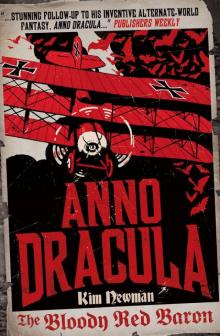 The Bloody Red Baron
The Bloody Red Baron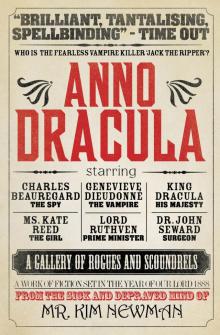 Anno Dracula
Anno Dracula Dracula Cha Cha Cha
Dracula Cha Cha Cha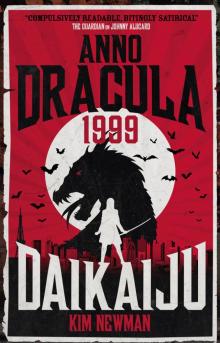 Anno Dracula 1999
Anno Dracula 1999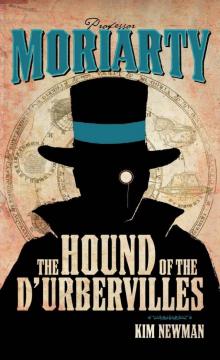 Moriarty: The Hound of the D'Urbervilles
Moriarty: The Hound of the D'Urbervilles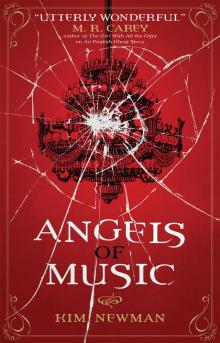 Angels of Music
Angels of Music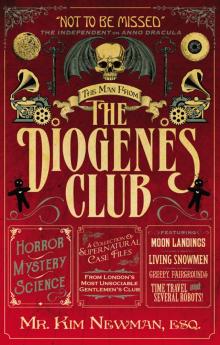 The Man From the Diogenes Club
The Man From the Diogenes Club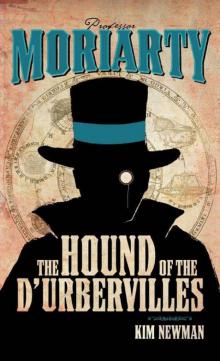 Professor Moriarty: The Hound Of The D’urbervilles
Professor Moriarty: The Hound Of The D’urbervilles The Night Mayor
The Night Mayor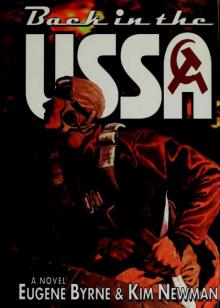 Back in the USSA
Back in the USSA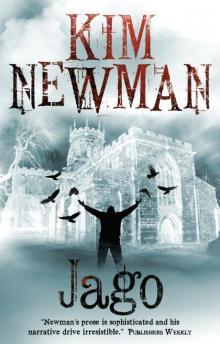 Jago
Jago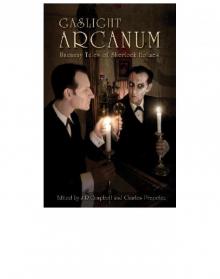 Gaslight Arcanum: Uncanny Tales of Sherlock Holmes
Gaslight Arcanum: Uncanny Tales of Sherlock Holmes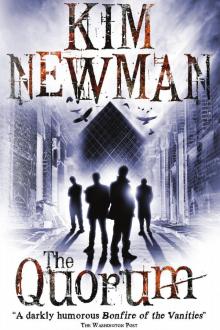 The Quorum
The Quorum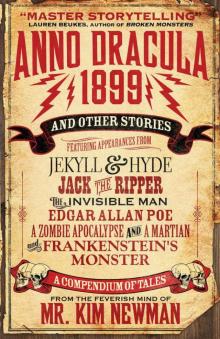 Anno Dracula 1899 and Other Stories
Anno Dracula 1899 and Other Stories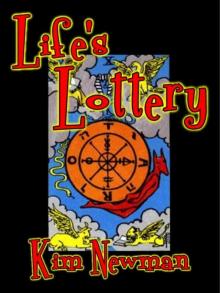 Life's Lottery
Life's Lottery The Secrets of Drearcliff Grange School
The Secrets of Drearcliff Grange School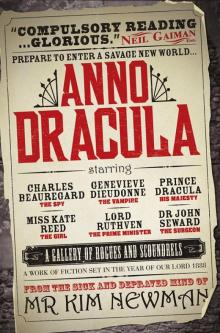 Anno Dracula ad-1
Anno Dracula ad-1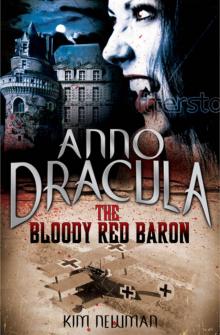 The Bloody Red Baron: 1918 ad-2
The Bloody Red Baron: 1918 ad-2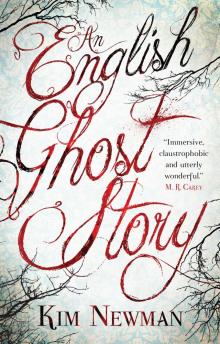 An English Ghost Story
An English Ghost Story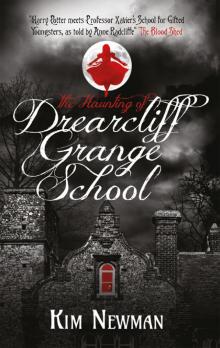 The Haunting of Drearcliff Grange School
The Haunting of Drearcliff Grange School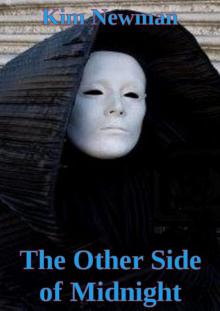 The Other Side of Midnight
The Other Side of Midnight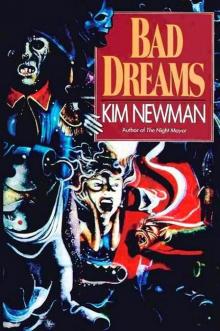 Bad Dreams
Bad Dreams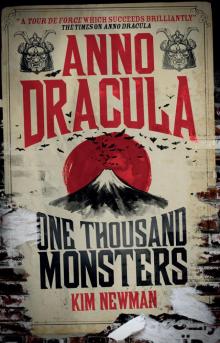 Anno Dracula--One Thousand Monsters
Anno Dracula--One Thousand Monsters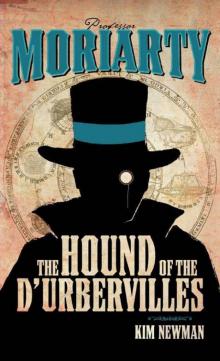 The Hound Of The D’urbervilles
The Hound Of The D’urbervilles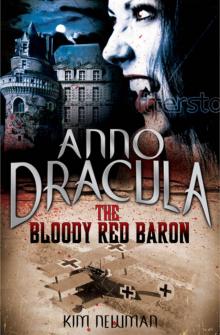 The Bloody Red Baron: Anno Dracula 1918
The Bloody Red Baron: Anno Dracula 1918